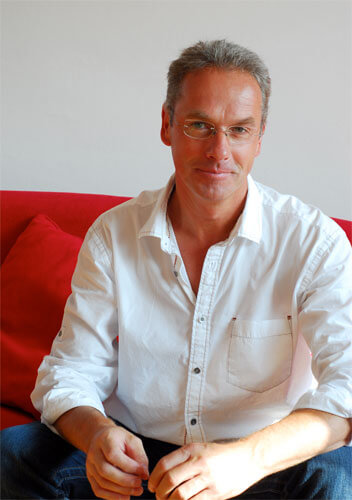
In the series "24 Hours" Peters reflects on the moment of simultaneousness. He dissolves the visual antagonism between the moment before and afterwards in each image. The works represent the light cycle of one day, starting from the left at night, passing daylight and ends again in the darkness of the night. The time states are not superimposed one upon the other but set side by side. In an extraordinary technique Ralf Peters obtains that the transition of the different daytimes is shown as in fast motion and is continued without any cuts, but can be noticed in the brightness and the illumination of the motif. Day and night are united in one image and at the same time, appearing invisible and visible. The variety of subjects going from exotic landscapes to cool architecture allows a reflection about our own world and foreign surroundings referring to a superior relationship of time and space.
(Source: Diana Lowenstein Gallery)
Ralf Peters is a conceptual photographer who creates visual studies of places and objects, often in thematic series. Playfully navigating between fantasy and reality, Peters manipulates digital images to challenge the viewer’s conception of traditional photography, raising the question as to whether something is a realistic rendering or a skillfully manipulated vision. Through the creation of portraits of everyday locations like supermarkets, gas stations, and swimming pools, Peters explores the possibilities for the photographic medium. Manipulating the focus, lighting, and composition of his images, Peters creates photographs that obscure the traditional notion of capturing an individual’s perspective on reality, favoring, instead, constructed works that comment on the aesthetic relationship we have to our surrounding environment. Peters’s works have been shown at notable institutions including the Hamburg Kunsthalle and Museu de Arte Moderna de São Paulo.
(Source: Art Space)
Represented by:
Diana Lowenstein Gallery
Galerie Kornfeld
Galerie Bernhard Knaus Fine Art
Galerie Martin Mertens
Galerie Andres Thalmann